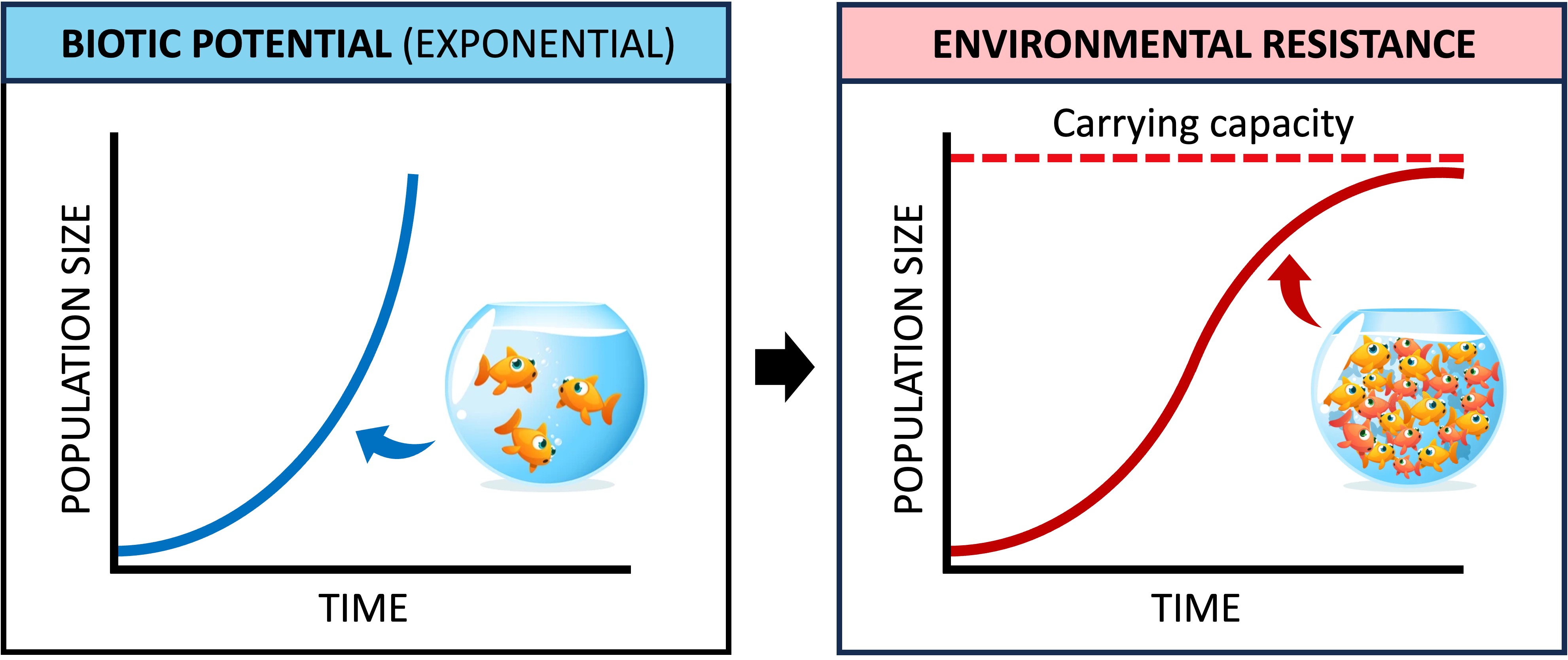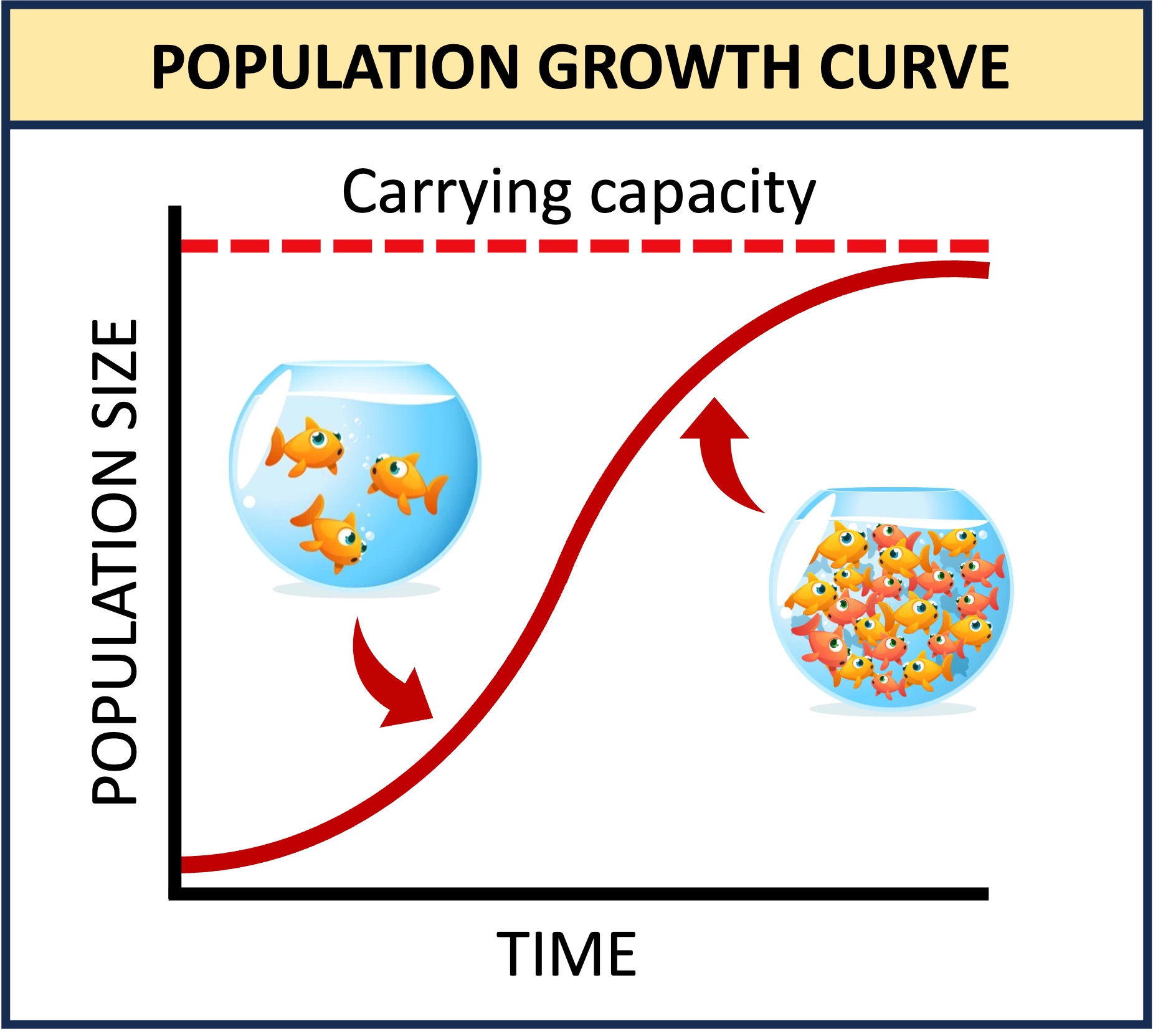

Competition
Species have a natural tendency to produce more offspring than the environment can support
-
An overproduction of offspring improves the chances that some will survive to reproduce and maintain continuity
-
Large amounts of offspring increases the genetic diversity of the population – making it more resilent to changing conditions
If left to follow course, a population will inevitably outgrow its resource base, leading to competition for survival
-
When there is an abundance of resources, a population will grow according to its biotic potential (exponential J-curve)
-
With more offspring, there are less resources available to other members of the population (environmental resistance)
-
This will lead to a struggle for survival and an increase in the mortality rate (causing population growth to slow and plateau)
This concept is central to Darwin’s understanding of ‘survival of the fittest’ – any trait that is beneficial for competitive survival will be more likely to be passed on to offspring according to natural selection
-
Competition can be either infraspecific (between members of a species) or interspecific (between different species)
-
Resources that may become limiting include food, water, shelter and access to sunlight
Population Growth






